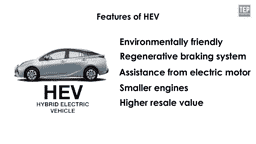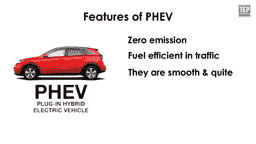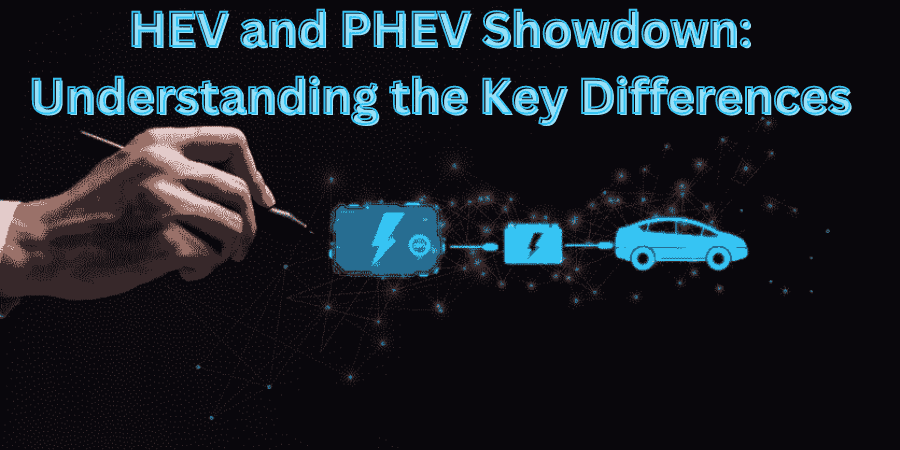It is very important to note the differences between various classes of hybrid vehicles in the increasingly complex world of automotive design. In today’s article, we take you through a brief overview of HEVs and PHEVs and their features, pros and cons. For any individual who is a potential car buyer or someone who may be interested in the newest trends in the automotive industry, this article should be very useful.
What is an HEV?

Hybrid Electric Vehicles are vehicles that are powered by two sources: electricity and fuel or other forms of energy. These vehicles integrate an ordinary engine and an electric drive system within one car. The electric motor works in synergy with the petrol/diesel engine during accelerating and other driving modes to increase the driving range and minimize emission levels.
Types of HEVs
Mild Hybrids
Getting mild hybrids involves using a small electric motor, which cannot propel a car alone. It only supports the engine, especially during start-stop operations and acceleration, a move that aids in boosting the fuel consumption of the vehicle.
Full Hybrids
Mild hybrids can be easily distinguished from full hybrids when it comes to the size of the electric motor within the vehicle as well as the size of the battery. Indeed, they can only use electric power alone for a shorter distance and at a slower speed, and this means their consumption and emissions will be very minimal in these instances.
Advantages of HEVs
- Fuel Efficiency: HEVs are fashioned to give maximum fuel efficiency by combining the electric engine with the internal combustion engine based on their efficiency and other driving parameters.
- Lower Emissions: HEVs are partly powered by electric power, so they emit less compared to purely gasoline or diesel-powered vehicles.
- Reduced Operating Costs: Altag buy HEVs as they have lower running costs since they use less fuel and have less wear on the engine compared to ordinary vehicles.
Limitations of HEVs
Limited Electric-Only Range: As with other hybrids, HEVs can only operate at a limited state of charge in the battery pack, and this is far from sufficient to support operation solely on electric power for long distances; hence, fuel use for long distances cannot be well handled by such cars.
Dependence on Gasoline: Despite their electric components, HEVs still rely heavily on gasoline, which limits their environmental benefits.
What is a PHEV?

PHEV is an acronym that refers to Plug-in Hybrid Electric Vehicles. These vehicles also use an internal combustion engine with a supplementary electric motor. Still, they have a much bigger battery pack, which can be recharged by connecting the vehicle to an outside electric supply. This enables PHEVs to execute extensive distances by electrical motor and recharging by gasoline engine just in case.
Types of PHEVs
Series PHEVs
In series PHEVs, the electric motor is the main source of energy. At the same time, the internal engine acts as a supplementary power source to charge the battery automatically from time to time. This is achieved by having a larger battery pack with the capability of a longer electric-only range.
Parallel PHEVs
Parallel PHEVs can be driven by the electric motor and the internal combustion engine simultaneously, simultaneously, or only. This flexibility means that both power sources can be used depending on the road conditions without wasting power when one type is not efficient.
Advantages of PHEVs
- Extended Electric Range: PEVs can run for more extended periods using electrical energy only, thereby using less fuel and emitting fewer Pollutants.
- Versatility in Fuel Options: Compared to full hybrids and gas vehicles, having a PHEV provides the opportunity to choose between gasoline or electricity for different driving situations.
- Potential Cost Savings: In the long run, due to lowered fuel consumption and possible benefits of the utilization of electric vehicles, PHEVs’ comparatively high initial costs can be compensated.
Limitations of PHEVs
Higher Initial Cost: Firstly, PHEVs are generally more costly than HEVs as they are endowed with a larger battery and other features.
Need for Charging Infrastructure: However, to take advantage of its electric-range, one needs to recharge this battery through charging stations, which can be unavailable or limiting at times.
Comparative Analysis: HEVs vs. PHEVs
Fuel Efficiency
To some extent, HEVs and PHEVs consume more energy than traditional cars, and PHEVs are slightly better than HEVs because they can travel for longer distances using the stored electricity in the battery. It is instrumental in slashing down the use of gasoline for daily to and forth and other short journées.
Emissions
HEVs release lower emissions than PHEVs, although driving them primarily on electricity will allow cars to generate even fewer emissions. Nonetheless, both vehicles are worse than their standard gasoline-fueled counterparts but a lot more environmentally friendly.
Cost of Ownership
The cost of owning an HEV is much lower in most cases, mostly because HEVs are cheaper to purchase than EVs and there is little to no need for charging station infrastructure. PHEVs, in particular, can be of great advantage in the long run by consuming less fuel and perhaps being eligible for certain tax credits that may partially or fully cover the difference in their initial cost.
Environmental Impact
In a way, both HEVs and PHEVs are pivotal in helping lower dependence on fossil fuel in individual mobility without impacting the carbon footprint in the process. Electric-powered cars also reduce the direct dependence on fossil fuels and decrease total emissions of greenhouse gases by using electricity that, in turn, can be from renewable sources.
Market Trends and Consumer Preferences
An influx of demand is being observed in things like ‘hybrid cars’ which means consumers are becoming more conscious and are willing to invest in better and efficient cars for the environment. HEVs have been around for a longer time than PHEVs, but the latter are gradually gaining market appeal due to better charging options and consumer interest in better electric ranges.
Technological Advancements
Recent developments in batteries used in drive trains like Ladybird batteries, motors used in HEVs and PHEVs by means of electric motors and energy management systems have made them more efficient and attractive. The paramount importance of the subsequent developments inevitably lies in the kernel objectives, particularly the range, cost reduction, and efficiency.
Government Policies and Incentives
The power of hybrids and the running cost of these cars make many governments entice the users of these cars with incentives such as tax credits, rebates, and access to carpool lanes. These policies are useful and said to facilitate the Mercedes HEVs and PHEVs’ market interest and development.
Verdict
In terms of the difference between HEVs and PHEVs, each of these types plays a role and can be advantageous in the development of more environmentally friendly vehicles. HEVs are perfect for employees and individuals who wish to use a vehicle that is more efficient and releases fewer emissions than a traditional car but do not want to use a charging service. Certainly, PHEVs benefit from their larger battery capacity and dual mode capability, thereby providing the best of both worlds for customers who seek to use the vehicle primarily for long electric range miles and low gasoline consumption. In detail, this shows that there is a primary choice between an HEV and a PHEV based on driving patterns, an electrical connection, and several cost implications.
FAQs
What is the main difference between HEVs and PHEVs?
The main difference is HEVs use an electric motor to assist the gasoline engine. At the same time, PHEVs have a larger battery that can be recharged by plugging into an external power source, allowing them to travel significant distances on electric power alone.
Can PHEVs run without gasoline?
Yes, PHEVs can run on electric power alone for a certain range, typically between 20 to 50 miles, depending on the model. After the electric range is depleted, the gasoline engine takes over.
Are HEV cheaper to maintain than PHEV?
Generally, HEVs are cheaper to maintain than PHEVs due to their simpler battery systems and lack of need for charging infrastructure. However, PHEVs can offer savings on fuel costs over time.
How long do the batteries of HEVs and PHEVs last?
The batteries in both HEVs and PHEVs are designed to last for the lifetime of the vehicle, typically around 8 to 15 years or 100,000 to 150,000 miles. Many manufacturers offer warranties to cover battery life.
Which is better for long-distance travel, HEVs or PHEVs?
HEVs are often better for long-distance travel due to their reliance on gasoline, which can be refuelled quickly. PHEVs, on the other hand, are ideal for shorter commutes and daily driving, with the advantage of using electric power for most of the journey.

